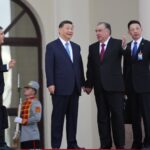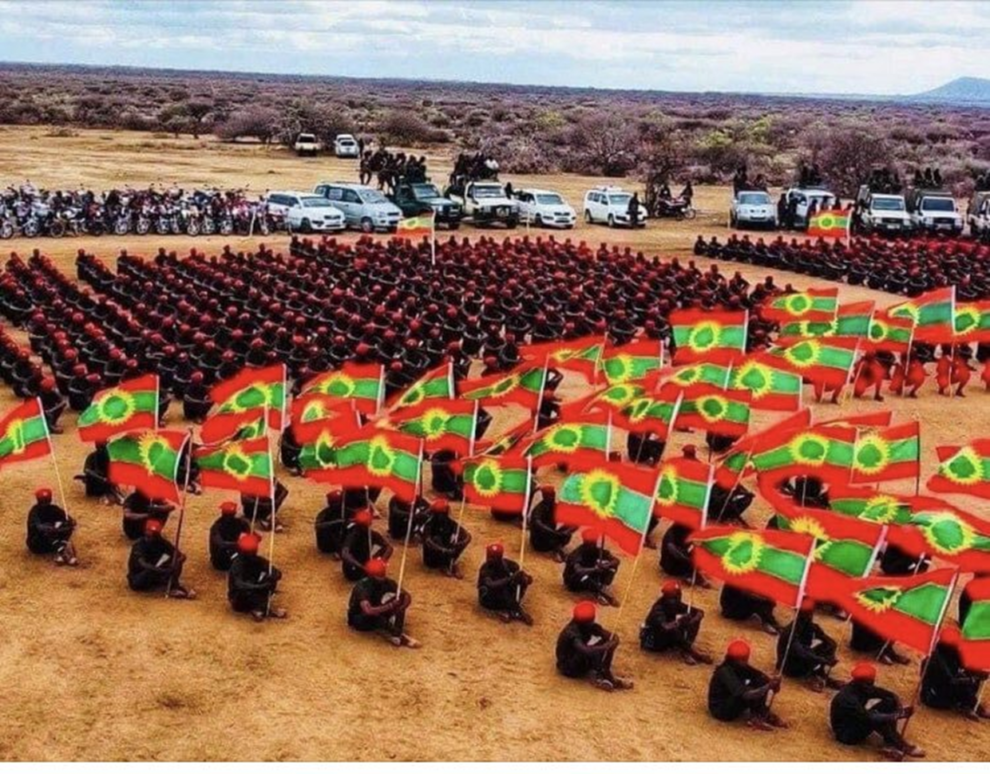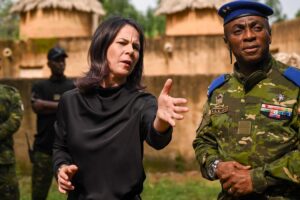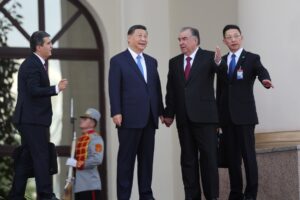Ethiopia’s government and Oromo rebels meet in Tanzania for talks.
Ethiopia’s long-running ruinous conflict in Oromia may finally be coming to an end as the government and Oromo Liberation Army (OLA) engage in talks in Tanzania.
Following Prime Minister Abiy Ahmed’s announcement of the forthcoming peace talks, the OLA expressed its readiness to participate and discussions began on 24 April in Zanzibar.
As such, both parties finally appear open to dialogue.
The OLA’s insurgency grew over the past four years in response to the government’s intensifying clampdown on political activity, which motivated scores of young activists to join the Oromo nationalist rebels. That occurred when the transition derailed and most of the opposition boycotted delayed elections, citing repression.
Ensuing strife resulted in a horrific civil war in and around Tigray, rising Amhara-Oromo tensions, worsening political repression, and widespread human rights violations, including multiple atrocities by state security forces.1
In Oromia, the insurgency grew and spread, with the OLA controlling rural areas and carrying out occasional hit and run operations on government targets. The government conducted a ruthless counter-insurgency operation, including some indiscriminate air strikes on civilian areas, apparently on certain occasions to punish people for supporting insurgents during graduation ceremonies for fresh recruits.
Bridging Divides
The news of talks comes after signs this year that both sides were looking for an alternative to more destructive low-intensity warfare that has exacerbated a severe drought in southern parts of Oromia and disrupted agricultural and other economic activity across swaths of the region of more than 40-million people.
After the government expressed its willingness to engage in negotiations with the group in March, the OLA insisted on the involvement of a neutral third party in any potential peace process.2
Abiy followed this up by announcing the formation of a committee tasked with ending the hostilities in Oromia. Last week he visited Wollega in the region’s west, the epicenter of the rebellion, possibly finalizing peace plans with local dignitaries.
Abiy’s begrudging acceptance of the mediation process is tied to international pressure to make peace in Tigray and Oromia – which is in effect a precondition for IMF and other funding to resume – as well as his administration’s fallout with its erstwhile allies over attempts to disarm Amhara regional forces.3
Mediation Detail
While the prospect of negotiations offers hope of ending the carnage, many details remain to be ironed out. Most notably, no announcement has been made concerning the critical issues of third-party mediation.
The OLA had previously insisted that the U.S. must provide logistics – as it did to convene federal and Tigray officials – while the African Union (AU) and Intergovernmental Authority on Development (IGAD) are also likely to be involved. The head of IGAD is an important Oromo ally of Abiy, Workneh Gebeyehu.
The process is being led by conflict resolution outfit Humanitarian Dialogue with support to varying degrees by entities from Kenya, Norway, Canada, and probably the U.S. and European Union. It’s not clear what role, if any, the Tanzanian authorities will play other than as hosts.
Redwan Hussien, National Security Affairs Advisor, and Gedion Timothewos, the Minister of Justice, are part of the Ethiopian government’s delegation for the negotiations. Both men were central in the negotiations with Tigray’s leadership.
Meanwhile, the OLA representatives include Jiregna Gudeta, Benti Ujulu, Mohammad Hassan, and Abdi Taha.4 Jiregna heads a diaspora-based OLA political division and advises Chief Commander Kumsa Diriba (‘Jaal Marro’), Benti heads the OLA’s political branch in Europe, and the two other delegates are scholars who back the OLA’s objectives but their leadership positions within OLA are not known.
Potential Roadblocks
Amid ongoing fighting in Oromia, the mediation process has already faced minor disagreements as OLA leaders question the government’s characterization of the meetings as the commencement of negotiations. In the OLA’s eyes, initial talks will be centered on planning and designing the peace process.
OLA representatives may also be concerned by the minimal involvement of influential western countries, and it seems the two parties have yet to reach consensus on the identity of third-party mediators, perhaps because those discussions have yet to be had in earnest.
The OLA chief has indicated he is willing to make some concessions in pursuit of peace but emphasized that the fundamental demands of the Oromo people will not be compromised. Kumsa remains cautious given what he described as the failure of previous peace talks in 1991 and 2018.
The government’s continued use of the term “Shene” when referring to the OLA raises further concerns for many Oromos. This term was coined by the government in an effort to portray the OLA as illegitimate and is not used by the OLA itself or by its supporters.
At the height of the Tigray war, in 2021, federal authorities branded the OLA a terrorist organization, alongside the Tigray People’s Liberation Front (TPLF), and the two formerly opposed groups were loosely and briefly allied during the conflict.
Any peace deal will necessitate removing this terrorist designation much like federal authorities did in March for the TPLF after making peace with Tigray’s leadership.
Ultimately, the OLA said in a recent manifesto that a “comprehensive political settlement that emanates from an all-inclusive political process involving all stakeholders and representative political forces” is needed in Ethiopia.
Broader War
The OLA is a splinter group of the OLF, which has long led the struggle for Oromo autonomy. The split occurred in 2019 after the OLF was invited home by Abiy in 2018 and some OLA commanders said they didn’t trust the transition process.
Since 2019, the government has been actively pursuing not only members of the OLA but also their suspected supporters and family members as part of its broader counter-insurgency operation to try and dismantle the organization.
Human Rights Watch says that security forces have conducted extrajudicial killings and detained, tortured, and mistreated individuals suspected of supporting or being a part of the OLA.5
Moreover, the government shut down all political avenues for opposition parties, cracking down on dissenting voices and silencing all but pro-government opinions.
In the latest example, high-ranking Oromo Liberation Front (OLF) officials disappeared from an Ethiopian prison in Burayu, Oromia region, on 18 April amid allegations of torture, abuse, and arbitrary detention.6
Government officials accuse the OLA of being responsible for a slew of atrocities targeting civilians, particularly Amhara, in Oromia. One of the most recent and brutal such incidents occurred on 18 June 2022 in a village called Tole.7
The OLA says the killings are done by government-organized militia that act as a “counterfeit OLA” to undermine its struggle and justify its so-called law enforcement tactics. It also points to killings by federal forces, Oromia and Amhara special forces, and Fano militias.

OLA Southern command graduation ceremony; 2021
Competing Narratives
The OLA says it’s fighting for Oromo self-determination against an illegitimate regime and wants an end to state repression.
In its manifesto, it listed some specific demands, such as giving the Oromo language equal status to Amharic and making the federal capital Addis Ababa – or, Finfinne in Oromiffa – an “integral part of Oromia” with the government acknowledging the Oromos’ “longstanding proprietary right to the city.”
That is one of the positions that brings the OLA – and other Oromo nationalist groups – into sharp disagreement with Amhara-oriented political parties, who say Oromo nationalists want to take over the city to the detriment of other residents.8 They also accuse the OLA of trying to ethnically cleanse Amharas from Oromia.
Increasingly, the tensions have become intercommunal and were also represented in a schism this year in one of Ethiopia’s oldest, richest, and most powerful institutions, the Ethiopian Orthodox Church.
Amhara nationalists believe other Ethiopian ethno-nationalists are immutably anti-Amhara and many from the community reject the system of ethnic, or multinational, federalism.
Activists from other groups say Amharas dominated the imperial system that oppressed their people’s rights and still wield vast administrative, cultural, and economic power.
Dissenting Decades
Campaigners from the Oromo, the country’s largest ethnic group, have been pushing for better representation and self-determination since the 1970s.
In 2015, protests against the Ethiopian Peoples’ Revolutionary Democratic Front (EPRDF), which the TPLF founded and controlled, kicked off in Ginchi, a small town in Oromia, before spreading across the region and evolving into a nationwide movement.
While the protests began peacefully, they quickly turned violent after security forces killed hundreds of protesters. These protests led to a coalition among Oromo and Amhara branches of the EPRDF that ultimately sidelined the TPLF.
This power struggle within the EPRDF resulted in the appointment of Abiy – who was a leading member of the ruling coalition’s Oromia party and is of mixed Oromo-Amhara background – as prime minister in 2018, marking a significant change in the coalition’s dynamics.
Upon taking office, Abiy was seen as a transformative figure, particularly for the historically marginalized Oromo people. His promises to expand political opportunities and his offer to reintegrate exiled opposition parties ignited hope.
Unfortunately, this optimism faded quickly as the government’s response to Oromo demands were deemed insufficient, leading to increased unrest in Oromia.
Tensions escalated when the government tried to disarm OLA fighters, sparking protests across Oromia. An agreement reached between the government and OLF in early 2019 collapsed owing to distrust and the government’s failure to implement its terms. Consequently, the OLA armed wing distanced itself from the OLF.
As Abiy’s administration resorted to oppressive tactics, many Oromos’ faith in his leadership dwindled. The resulting grievances fueled the OLA’s burgeoning rebellion, turning the organization into a significant political force in Oromia and nationally — a fact that Abiy now seems to have belatedly recognized.
Source: ethiopia-insight











